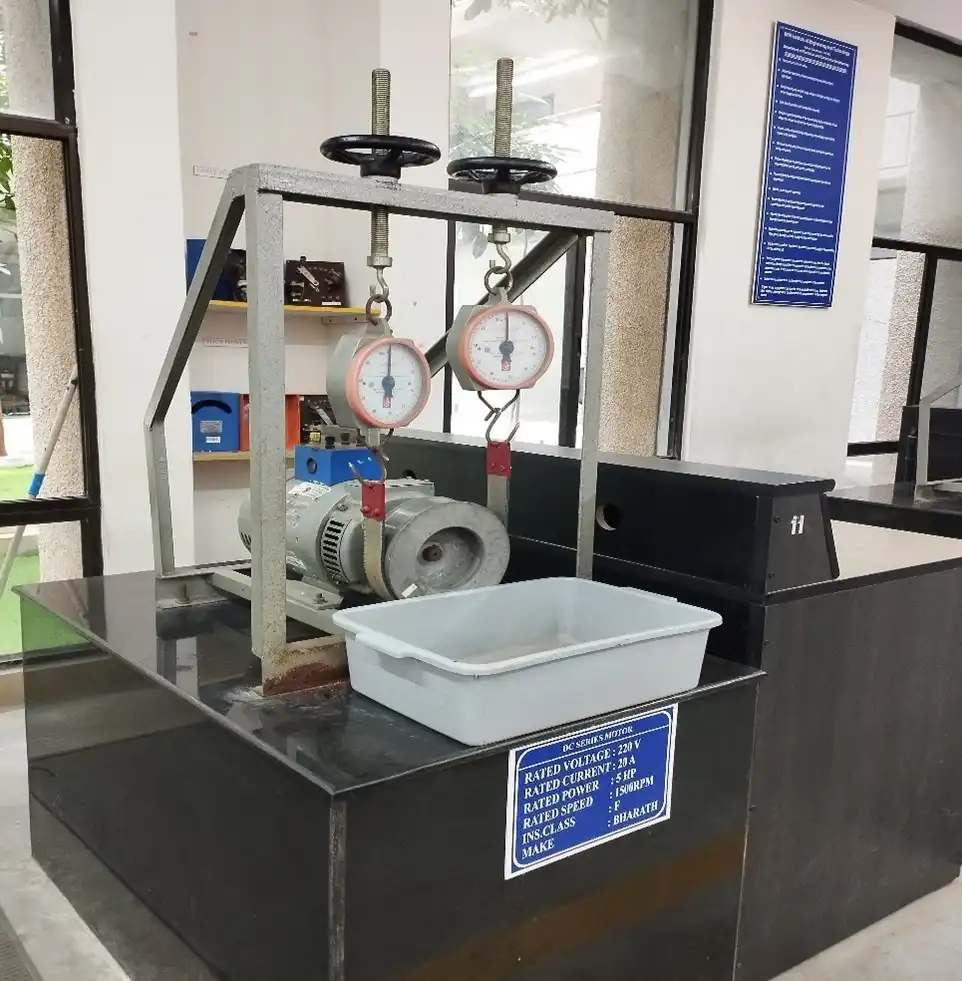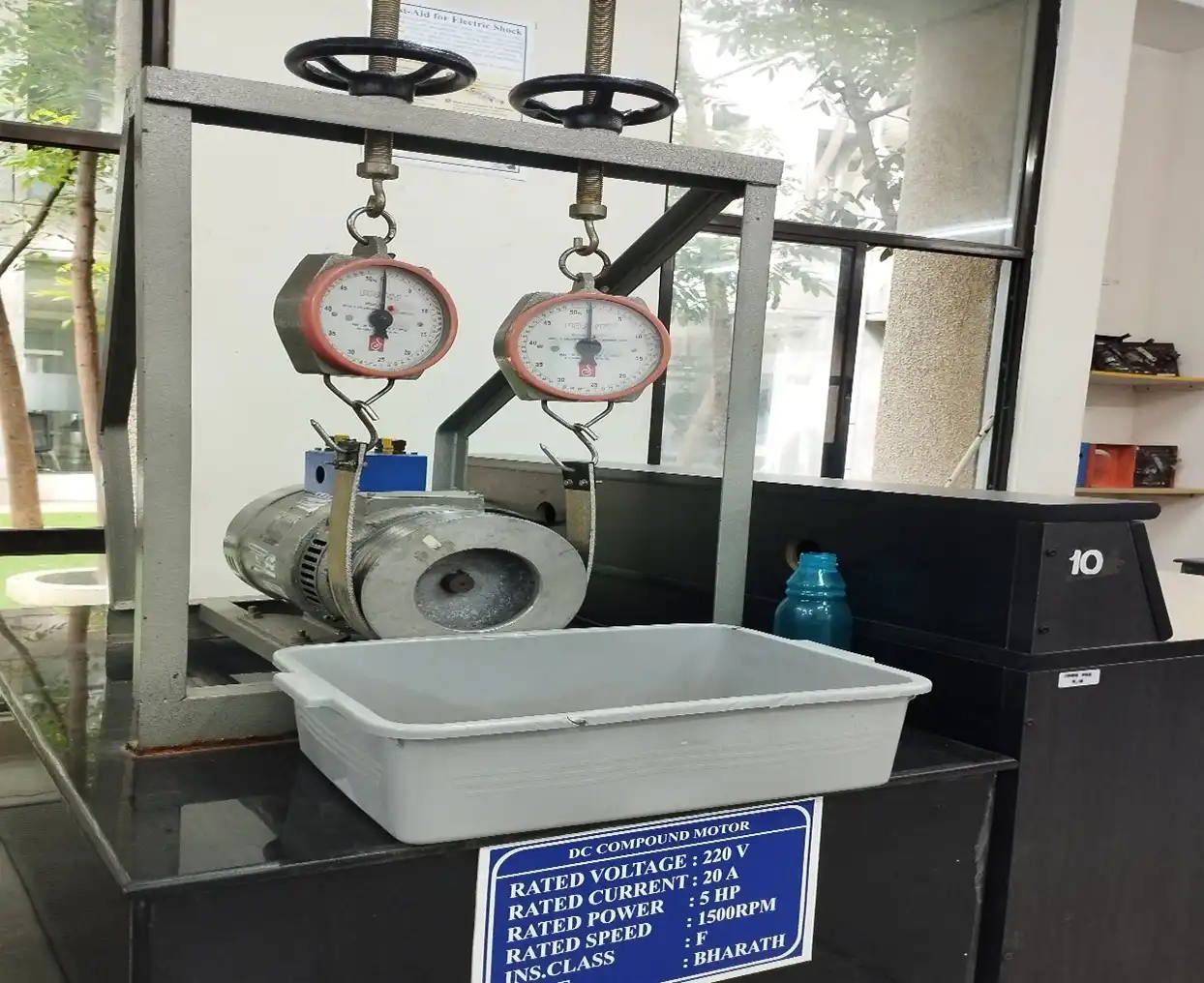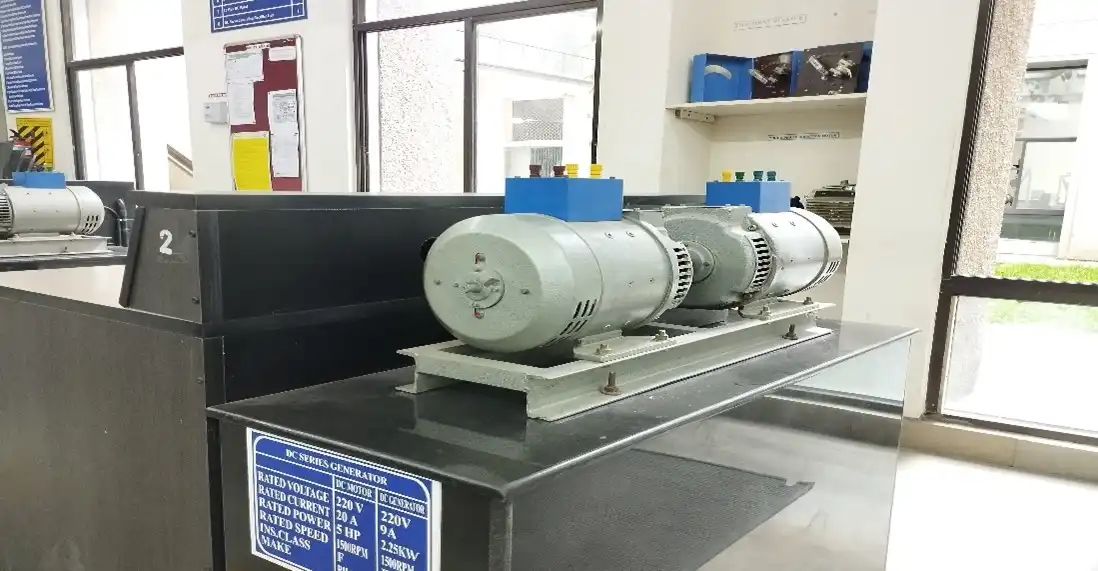This scientific laboratory was established since the establishment of the Department of Electrical Engineering and is being updated now and then. The laboratory contains all the DC machines and DC generators for carrying experiments for various engineering branches. Experiments are carried out on DC motors and DC generators, as well as experiments on compound motors and compound generators. In addition, experiments on special machines are also conducted. The lab is used for student's project and product development purposes.

The primary objective of a DC shunt motor is to convert electrical energy into mechanical energy. It achieves this by utilizing the interaction between the magnetic fields generated by the stator (field windings) and the rotor (armature) to produce rotational motion.

The primary objective of a DC series motor is also to convert electrical energy into mechanical energy. However, compared to DC shunt motors, series motors have distinct characteristics and specific objectives that make them suitable for different applications:

he objective of a DC compound motor combines aspects of both series and shunt motors, aiming to leverage the beneficial characteristics of both types. Compound motors have both series and shunt field windings, allowing them to offer specific advantages:

The primary objective of a DC shunt generator is to convert mechanical energy into electrical energy by utilizing the principle of electromagnetic induction. Specifically, a shunt generator converts the mechanical power input (usually from a prime mover like a turbine or an engine) into electrical power.

DC series generators are devices that convert mechanical energy into electrical energy, employing the principles of electromagnetic induction. Their primary objective aligns with that of other generators, but with distinct characteristics owing to their series field winding configuration:

The objective of a DC compound generator is to generate direct current (DC) electrical power by combining the characteristics of both series and shunt field windings. Compound generators aim to provide a balance between the features of series and shunt generators to cater to specific requirements in various applications: